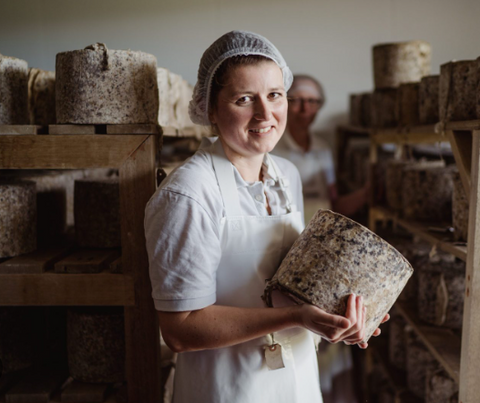Behind the Scenes with Cheese Makers Melbourne: Featuring Floridia Cheese
Behind the Scenes with Cheese Makers Melbourne: Featuring Floridia Cheese
Blog Article
Opening the Secrets of Artisanal Cheese Making: A Step-by-Step Do It Yourself Overview
In the world of culinary craftsmanship, artisanal cheese making stands as a testament to the delicate balance in between practice and innovation. As we embark on this trip to debunk the art of developing charming cheeses, we are encountered with a tapestry of tricks and skills waiting to be deciphered.
Choosing the Right Milk
When embarking on the trip of artisanal cheese making, the choice of milk plays a vital role in establishing the high quality and characteristics of the last product. The kind of milk chosen influences the taste, appearance, and generally account of the cheese.
Furthermore, the resource of the milk, whether from cows, goats, lamb, or buffalo, adds distinct flavors and attributes to the cheese. Each kind of milk brings its own nuances, enabling for a large array of cheese ranges to be crafted based on the picked milk.
Culturing and Coagulating
To start the cheese-making procedure, the critical actions of culturing and coagulating must be very carefully implemented to change milk right into curds and whey. Culturing entails presenting beneficial bacteria to the milk, which then starts the fermentation procedure. These germs convert lactose (milk sugar) into lactic acid, creating the acidic setting essential for coagulation. The sort of society utilized can dramatically impact the taste, appearance, and ripening of the last cheese product.

The timing and temperature level control during culturing and coagulation are critical aspects that affect the final end result of the cheese. Proper implementation of these steps is vital to make certain the preferred structure, flavor, and uniformity of the artisanal cheese being produced.
Draining Pipes and Pressing Curds
After the milk healthy proteins have coagulated and the curds have actually been reduced to release whey, the next essential action in artisanal cheese making involves draining pipes and pushing the curds to accomplish the wanted texture and uniformity of the final cheese item. Draining is the procedure of separating the curds from the whey. This can be done by transferring the curds right into a cheesecloth-lined colander or mold and permitting the whey to drain off naturally. The moment for draining can vary depending on the kind of cheese being made and the wanted moisture material.
Pressing helps eliminate any kind of continuing to be whey and compacts the curds to create a strong cheese wheel. Correct draining pipes and pressing are critical actions that dramatically influence the high quality and attributes of the artisanal cheese being created.
Aging and Flavor Methods
Executing meticulous aging and flavoring strategies is critical in boosting the More Bonuses depth and intricacy of artisanal cheeses, elevating their taste accounts to charming levels of refinement and sophistication. Aging plays a critical role in establishing the unique flavors and appearances that distinguish artisanal cheeses.
Flavoring strategies additionally contribute substantially to the last taste of artisanal cheeses. Cheesemakers might pick to introduce added tastes by integrating ingredients such as herbs, spices, or also fruits right into celebrity during the production process. Furthermore, some cheeses are cleaned or massaged with numerous fluids, such as salt water or alcohol, to improve their tastes and structures.
Covering and Saving Cheeses

Verdict
In final thought, grasping the art of artisanal cheese making entails carefully selecting the best milk, complying with exact culturing and coagulating procedures, draining pipes and pushing curds properly, and utilizing various aging and flavoring techniques. Remember to wrap and store your cheeses correctly to make sure ideal taste and texture advancement.
Each type of milk brings its own nuances, enabling for a large variety of cheese ranges to be crafted based on the selected milk.After the milk proteins have coagulated and the curds have been reduced to launch whey, the following crucial step in artisanal cheese making entails draining pipes and pushing the curds to accomplish the preferred structure and uniformity of the final cheese product. Most from this source cheeses should be covered in wax paper or cheese paper to permit them to take a breath while securing them from drying out. For cheeses that need to continue aging, such as bloomy peels or cleaned skins, ensure they are saved in a cool setting like a cheese cavern or a refrigerator set to the appropriate temperature level. By paying focus to the wrapping and storage of artisanal cheeses, cheese manufacturers and lovers can protect the stability of these delicacies and totally appreciate their complex tastes.
Report this page